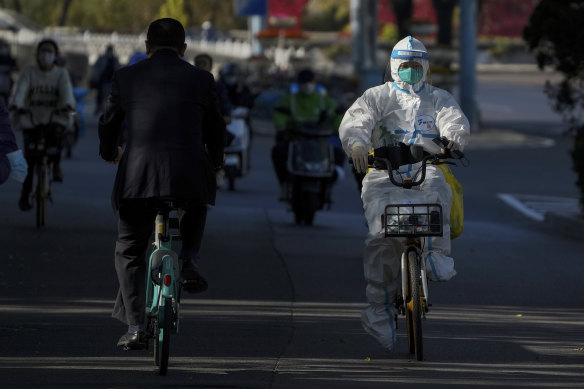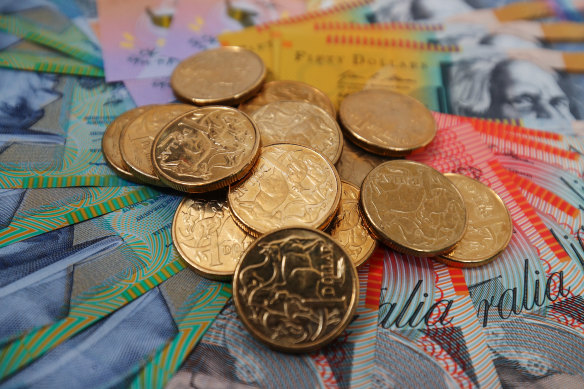The markets’ response might have been over the top. US rates will remain elevated for quite some time given the Fed’s commitment to its target of a two per cent inflation rate and that it remains likely that the US economy will slip into recession as the rate hikes (which impact with significant lags) continue to bite.
Nevertheless, the latest inflation print was the first solidly positive news on that front and came against the backdrop of an unlikely performance by the Democrats in the US midterm elections. They’ve maintained control of the Senate and, while on current voting trends will probably surrender the House to the Republicans, it will be by a very narrow margin.

The slight easing of COVID policies in China is giving investors hope that the world’s second-largest economy is poised to turn the corner.Credit:AP
“Gridlock” – where one major party controls the White House and the Senate and the other the House – is regarded as a positive for financial markets because it almost guarantees there will be no major new policy surprises.
The good news on the inflation front was complemented by surprising news from China, where officials had been consistently and vehemently rejecting speculation of an imminent easing of Xi Jinping’s rigid, and economically destructive, zero-COVID policies.
While the changes announced on Friday are modest – a halving of quarantine periods for those entering China, some reduction in testing requirements for travellers, reduced contact tracing within China and more limited lockdowns – they do show both a recognition of how significantly the zero-COVID approach has damaged the economy, how unpopular it is within China and how unnecessarily crude it is.
While the changes are more fine-tuning than deregulationary, and Chinese officials remain adamant that they won’t relax the core of the policies, there remains speculation that there will be further and more substantial changes early next year to policies that have weighed heavily on China’s economy. GDP growth this year was targeted to be 5.5 per cent. It will probably scrape in just above 3 per cent.
The developments in China added to the sense that last week were turning points for the world’s two largest economies, albeit modest and tentative ones.
The other big drag on China’s economic performance this year has been the continuing distress in its property markets, triggered by the introduction of gearing limits on property developers in 2020.
The policy triggered a wave of defaults by developers, a host of uncompleted projects and protests from apartment buyers saddled with mortgages for properties that might never be completed or even built.
On Friday the Peoples’ Bank of China and China’s banking regulator announced a series of measures designed to boost demand for property and ease the pressure on developers.
They’ve eased some of the restrictions on developers’ borrowings, given developers an extra six months grace period to meet obligations to banks and bondholders that fall due within the next six months, encouraged the developers to complete unfinished projects and banks to extend mortgage repayments by borrowers and are offering financial support for stronger developers to absorb weaker peers. The measures apply equally to private sector developers and their state-owned counterparts.

A month ago the Australia dollar was trading around US62 cents. It’s now worth just under US67 cents.Credit:Bloomberg
The officials are clearly trying to stabilise a property market that historically has been a major driver of economic activity and, by providing support for more credit to flow into the sector, slow and perhaps halt what has been a destructive spiral.
With developers facing hundreds of billions of dollars of principal and interest payments on their bonds over the next 12 months – Bloomberg’s estimate is just under $US300 billion ($448 billion) – the $US56 billion of new bank funding (on top of an earlier round of $US85 billion in September) may not be sufficient to reverse the decline but might help decelerate it.
The developments in China added to the sense that last week were turning points for the world’s two largest economies, albeit modest and tentative ones.
Loading
The markets’ responses might have been overdone but markets are forward-looking and, while still brittle and vulnerable to shocks, the surge in sharemarkets and significant fallbacks in bond yields late last week signal that, after a very bleak year – the US sharemarket is still down 17 per cent and bond investors have had their worst year in more than half a century – investors can see a glimmer of light on the horizon.
The Market Recap newsletter is a wrap of the day’s trading. Get it each weekday afternoon.

